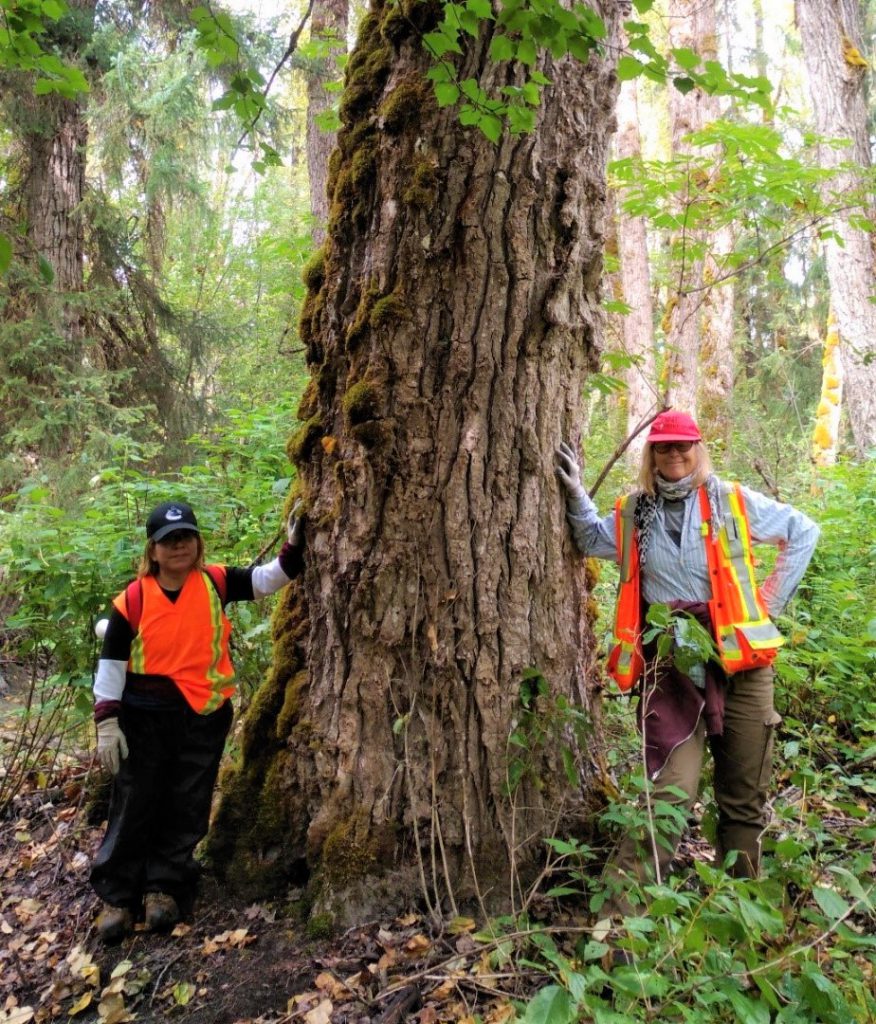Researchers Investigate how Vegetation is Changing at Nisga’a Memorial Lava Bed Park
Categories:
The 26 kilometre-square lava plain left by the Tseax Volcano in the Nass Valley is an impressive central feature of the Nisga’a Memorial Lava Bed Park north of Terrace, B.C. The volcanic eruption that took place sometime in the 1700s and its impacts are central to the history of the Nisga’a Nation. Large lava flows dammed the Nass River and destroyed two villages killing 2,000 of the Nisga’a people. Lava deposits extend up to 12 metres below the modern road.

Amid the lava landscape is a wide variety of vegetation, ranging from largely bare rock to blankets of lichens and mosses, and areas of mature lodgepole pine and cottonwood forest. Evidence suggests that the climate in northwestern B.C. is becoming wetter and milder. With forest cover reported to have developed rapidly in recent decades, it is conceivable that the iconic lava landscape covered by lichen and moss could be hidden by trees by the end of the century.
A two-year BC Parks Living Lab Program project has allowed researchers from the University of Northern BC to document and explain vegetation patterns in the park with the goal of understanding the differences between normal successional patterns and those related to climate change.
On-the-ground evidence, historical air photos, and the BC Wildfire Service have documented multiple wildfires over large sections of the lava beds, each one setting vegetation development back to square one. In the wet humid climate that marks the transition from coastal to interior biogeoclimatic zones, snow lichen is quick to establish, and can soon be smothered by thick blankets of hoary rock moss.
Microclimate monitoring and repeated moisture sampling suggests that this surface organic matter dries out much faster than suggested by the standard fire weather index calculations that were developed for forested habitats. Lightning is relatively rare in the lower Nass Valley, but people have crisscrossed the lava beds since they cooled, which may have been the source of fires.

Conversely, repeated flooding of Vetter Creek, the Tseax River, and the Nass River has resulted in water backing up over portions of the lava beds, depositing silt that makes excellent soil for plants. Leaves from the first trees contribute organic matter on which additional plants have been able to grow. Dust, seeds and water have accumulated in some of the lava cracks and depressions, also providing the right conditions where vascular plants such as ferns and birch trees can grow. Around the edges of the lava beds, surrounding undisturbed forest has contributed leaf litter, seeds and a bit of shade. Roads that cross the lava beds – unpaved from the 1930s until 2002 – also show some evidence of nearby dust deposition, along with a thin band of non-native weeds and trees.
Ecology textbooks like to emphasize how succession occurs as one community of plant species replaces another, in which the accumulation of organic matter is followed by vascular plant cover and then shade-tolerant species during ecosystem development. On newly deposited substrates such as volcanic lava, this study illustrates a much more complex story.
The volcanic eruption was a dramatic and destructive disturbance, but a distinctive climate on the lava plains, together with human use, have also repeatedly reset the pattern of succession there. Conversely, other disturbances such as flooding and road use have promoted the establishment of trees and other vascular plants. As extreme weather leading to fires and floods is likely to increase, future vegetation development on the lava beds could be set back in some places and could be accelerated in other places. This challenges the traditional succession process and sheds light on our uncertain future in a changing climate.
For more information about the BC Parks Living Lab Program, visit http://www.env.gov.bc.ca/bcparks/partnerships/living-labs/
Philip Burton is a professor with the Ecosystem Science and Management Program at the University of Northern British Columbia.




